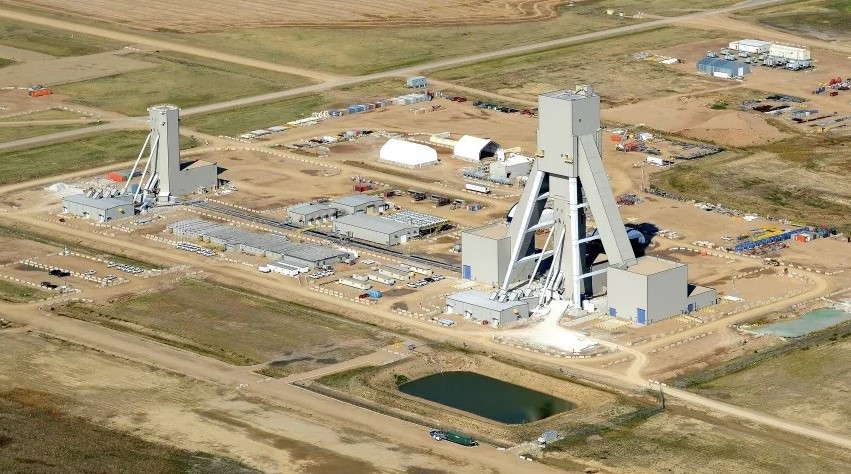In a presentation at the Bank of America Securities 2022 Global Metals, Mining & Steel Conference, BHP CEO Mike Henry talked up the potential for potash and decisions it has made to accelerate final development of its Jansen project in Saskatchewan, Canada, which in Stage 1 is expected to produce approximately 4.35 Mt/y of potash.
Henry commented: “We have been positive on potash fundamentals for many years now. Strong potash demand growth will be driven by global population growth, changing diets, and stronger global expectations with respect to environmental stewardship. Jansen is a good project in a great commodity and investing in potash will add further resilience to future returns. In addition to being in a different, attractive operating jurisdiction, and likely having a different spread of markets, potash demand and pricing are uncorrelated – or even negatively correlated – with the other commodities we produce. Oil and aluminium on the other hand are quite highly correlated to our existing commodities. Potash will bring greater cash flow stability and returns resilience.“
He added that the conflict in Ukraine has highlighted the higher than usual potential for supply side disruption in this market, with Russia and Belarus accounting for almost 40% of global production. This has positively reinforced BHP decision to enter the potash market.
In August 2021, BHP approved the first stage of Jansen. “Jansen Stage 1 is tracking to plan. Of the $5.7 billion investment, we’ve awarded around $1.4 billion in contracts so far, another US$200 million since our half year results in February, covering port infrastructure, underground mining systems and other shaft and surface construction activities. The fact that approximately 50% of the engineering was completed before sanction, gives us greater confidence in our schedule and capital cost ranges. Stage 1 is compelling in its own right, but the overall Jansen proposition is even more attractive. We see Stage 1 unlocking a new future growth front for the company with significant expansion potential which is expected to support up to a century of production.”
It is that longevity Henry says that is common to the assets and investments that have been BHP’s bedrock over many years, including its Western Australia Iron Ore assets, Escondida copper mine and the BMA business. “As we’ve demonstrated time and again, good resources get better over time. Large assets with expansion potential provide inherent capital efficient, high–return expansion options…for when the time is right.“
As such BHP is looking at the potential to accelerate Jansen Stage 1 first production into 2026 instead of 2027. “Saskatchewan weather over winter does act as a bit of a handbrake on further acceleration. We’ve also kicked off our studies for Stage 2. Jansen Stage 2 would add around an additional 4 Mt/y, at a capital intensity of between $800 and $900 per tonne – almost 30% lower than we expect for Stage 1 given that it will be able to leverage the infrastructure built along with Stage 1, including the shafts. While early days, it is expected to achieve an internal rate of return of between 18 and 20% and a payback period of around four years at long term consensus prices, which are well below current spot prices. If markets suit, we may be able to bring this product to market more quickly.”
Across all four stages at Jansen, BHP has a path to between 16 and 17 Mt of annual production – approximately a quarter of the current market size, although the market will have grown by the time they all come on. What’s more, each of these stages comes at a lower operating cost and capital intensity, faster pay–back and with higher incremental returns than Stage 1.
He concluded: “As always, our Capital Allocation Framework will guide our decision making on Jansen, but we can see a strong case forming in its favour. In effect, we can see a path through to a potash business at least equivalent in scale to our existing Petroleum business. While Stage 1 won’t deliver this alone, if we decide to bring on all four stages and at prices just half of where they are today, we’d be generating around $4 to $5 billion of EBITDA per year. For comparison, our Petroleum business averaged around $3 billion per annum over the past five years. And while it will require significant capital to build all four stages, potash requires less ongoing reinvestment than petroleum due to the absence of field decline…so the relative free cash flow of potash vs. petroleum will be even stronger and it will have the added bonus of negative correlation to existing commodities and better long term fundamentals.”











